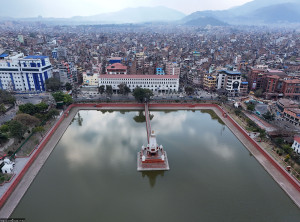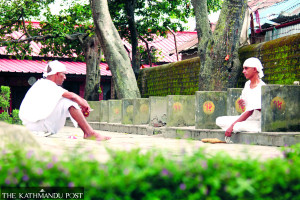National
‘Nepal won’t be able to end malnutrition before 2112’
Nepal will not be able to eliminate malnutrition until 2112 unless special measures are taken, a report says.
Nepal will not be able to eliminate malnutrition until 2112 unless special measures are taken, a report says.
According to “Unequal Portions”, made public by Save the Children, though Nepal is making good progress to combat malnutrition, the current progress is not enough to reach the Sustainable Goal to end malnutrition for all by 2030.
Although the country is making a good progress in combating malnutrition, with national level stunting reduced from 57.1% to 37.4% from 2001 to 2014, it has not been inclusive. The report also reveals that malnutrition in Nepal is closely related to poverty and more within socially excluded castes, ethnic, or religious groups.
“Our children face grave issues of losing out on a physically and mentally healthy future due to the lack of sufficient and balanced nutrition,” said Delailah Borja, country director of Save the Children.
In Nepal, stunting is highest for the ethnic group ‘others’ at 62%, and second highest for Hill Dalits at 51%, while stunting is the lowest for Tarai Brahmins and Chhetris at 13%.
Regional inequalities also seem to affect the irreversible effects of malnutrition – stunting is 37% in the Eastern region, and 50% in the western region. Talking of the effect of geography on nutrition, stunting is 42% in rural areas, compared to 27% in urban areas.
The research also points out the result of wealth inequalities: children in the poorest households are more than twice as likely to be stunted (56%) as children in the wealthiest households (26%).
The research found out that gender inequality cuts across all social groups, with women in the lowest wealth quintile more likely to be underweight (22%) than women in the highest wealth quintile (12%). On the basis of the report, Save the Children has made recommendations that exclusion is addressed through targeted tailored interventions for disadvantaged groups identified by the state as being vulnerable due to their social, economic, cultural, political and physical status.
To ensure every child has an equal opportunity to survive and benefit from access to nutrition, healthcare and education regardless of who they are or where they live, Save the Children recently launched a new three-year campaign-Every Last Child. The campaign calls on decision makers at the
household, local, national and international levels to ensure barriers that prevent the poorest, most discriminated against children from accessing life-saving services are eliminated.




 25.53°C Kathmandu
25.53°C Kathmandu













